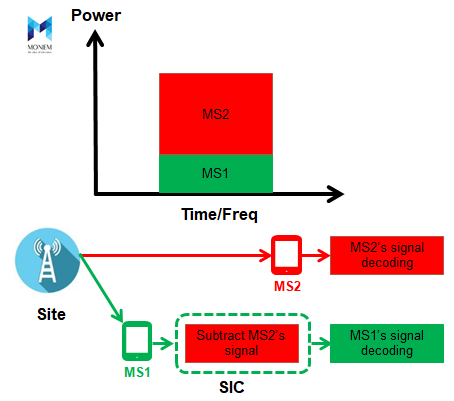NOMA is highly promising for 5G radio access. The fundamental concept of NOMA is supporting multiple users in the power domain.
In contrast to the conventional multiple access (MA) techniques, NOMA uses a new dimension to perform multiplexing within one of the classic time/frequency domains.
NOMA can be regarded as an “add-on” technique, which has the promising potential of facilitating integration with the existing legacy-solutions.
Basic NOMA concept:

NOMA exploits superposition coding at the transmitter and successive interference cancellation (SIC) at the receiver, thus multiplexing users in the power domain.
The Site sends the superposed signals to two users, where User 1 has higher channel gain than User 2. In NOMA, Strong User and the Weak User are users with higher and lower channel gain, respectively.
The Strong User first subtracts the signal of the weak user through SIC and then decodes its own signal.
The Weak User understands the signal of the strong user as noise and detects its own signal directly. The weak user is given more power in NOMA to guarantee fairness.
Benefits of NOMA
- It achieves spectral efficiency by serving multiple users at the same time and with the same frequency resource and mitigating the interference through SIC.
- It increases the number of simultaneously served users, and thus, it can support massive connectivity.
- Due to the simultaneous transmission nature, a user does not need to go through a scheduled time slot to transmit its information, and hence, it experiences lower latency.
- NOMA can maintain versatile quality of service by resilient power control between the strong and weak users.
